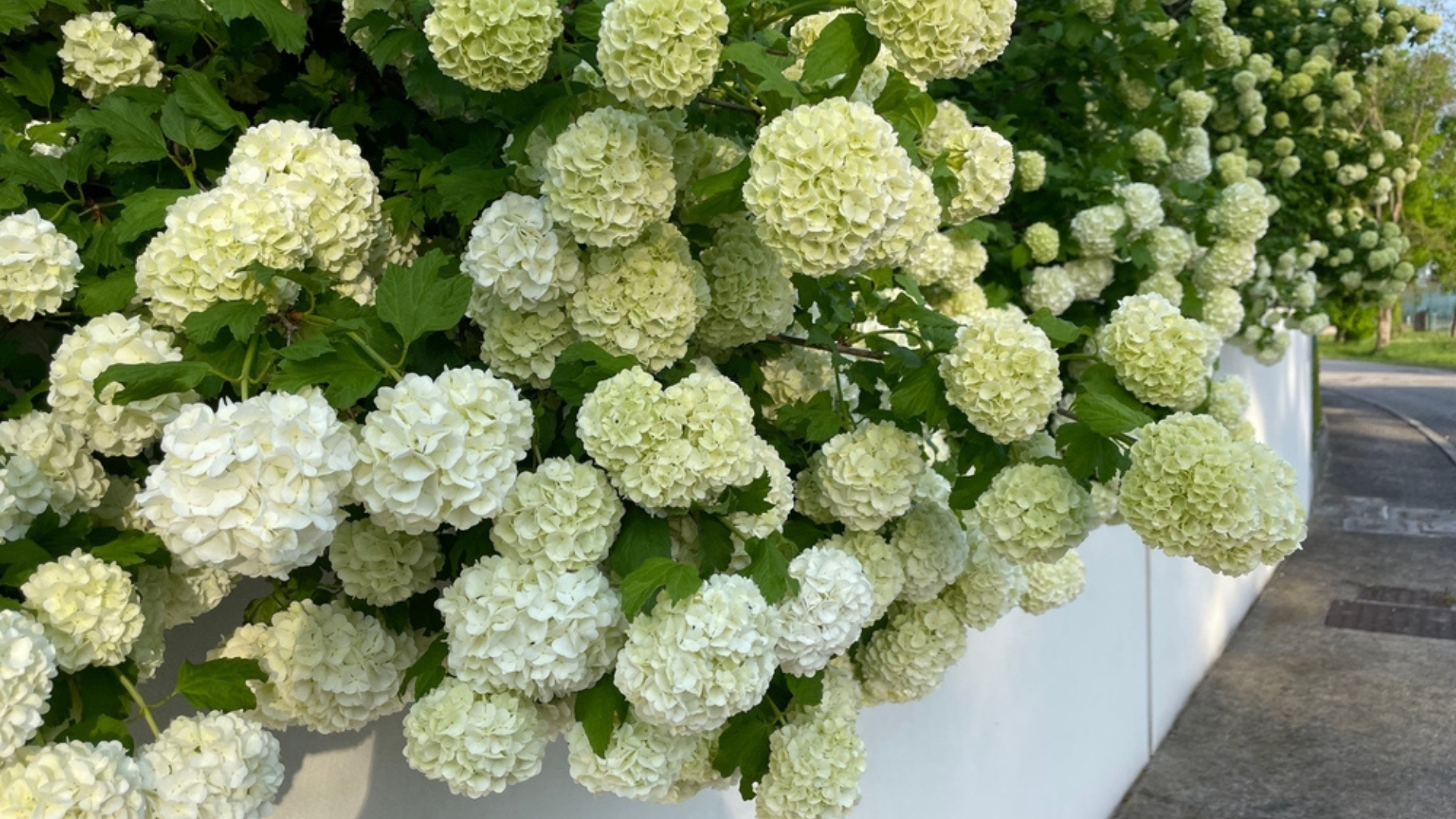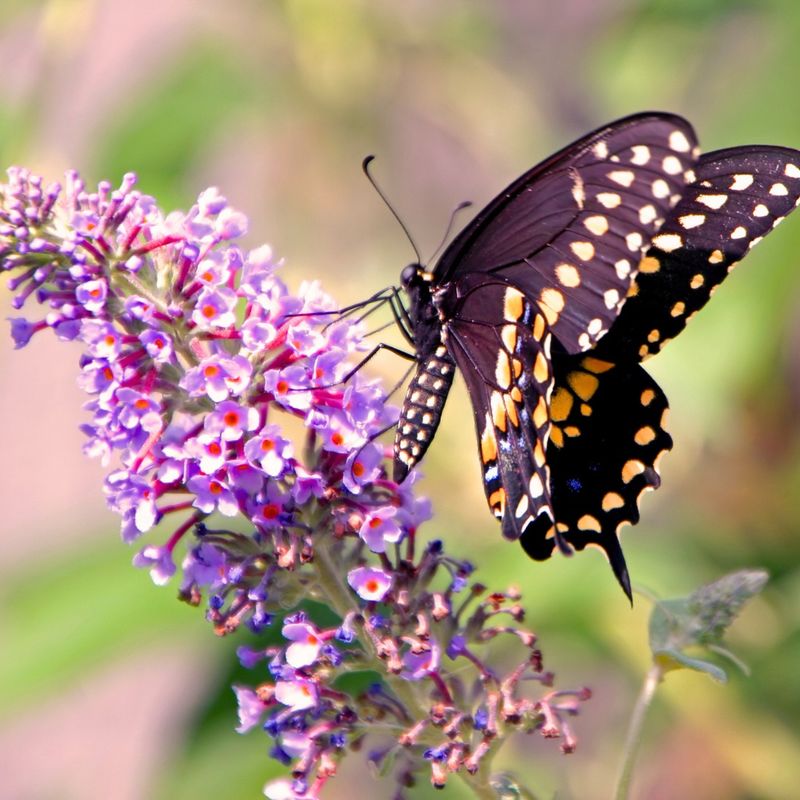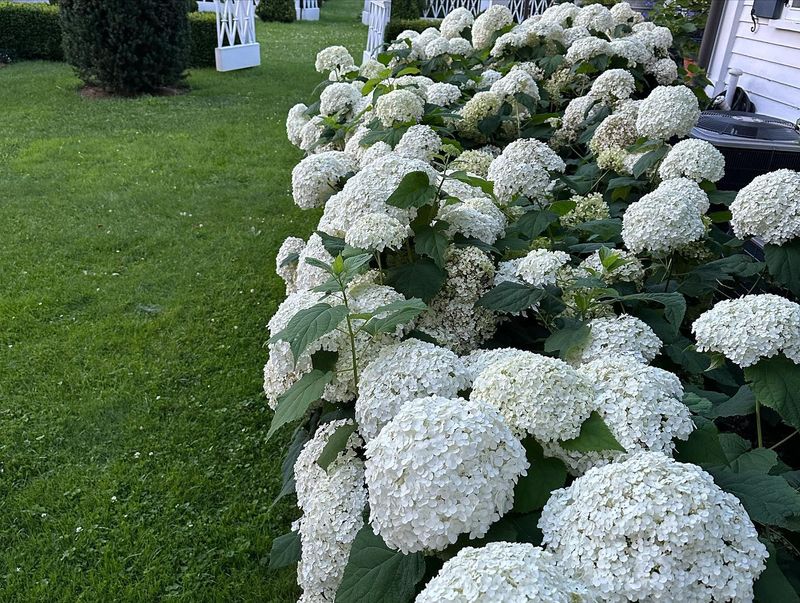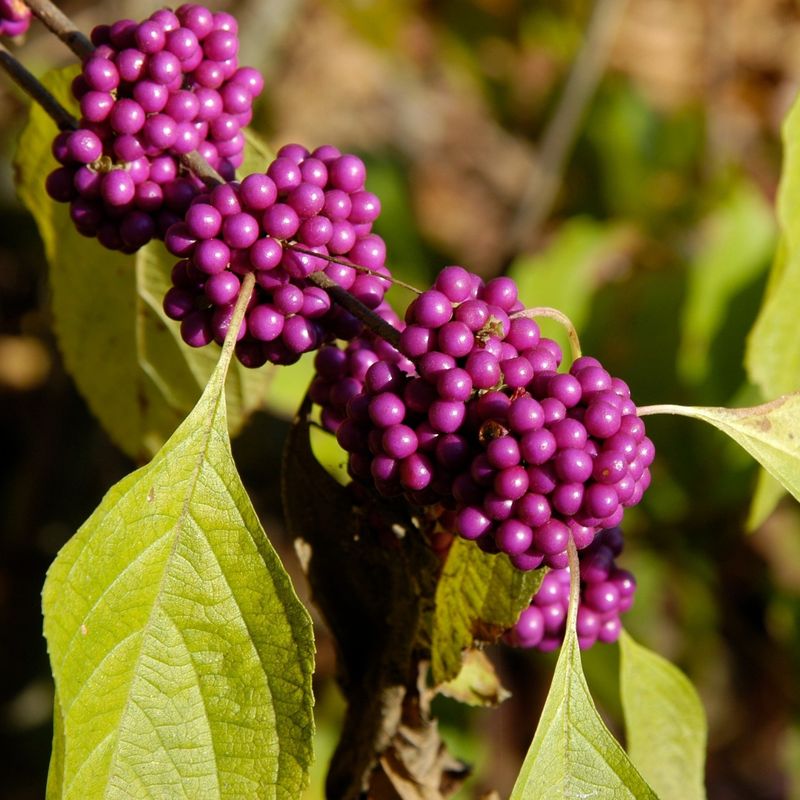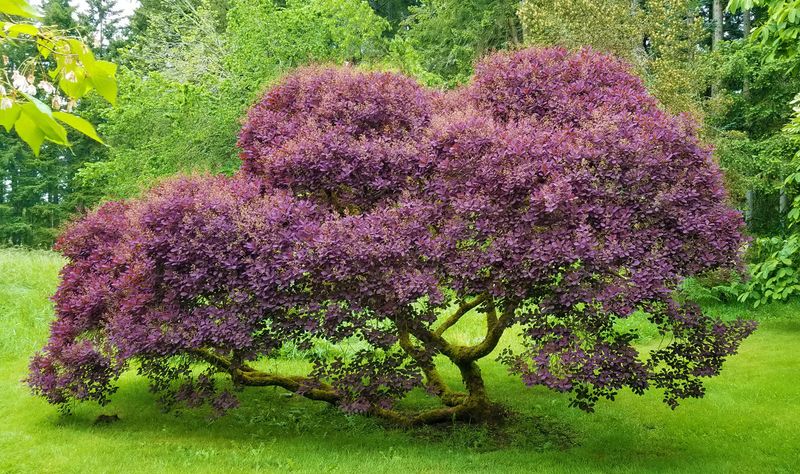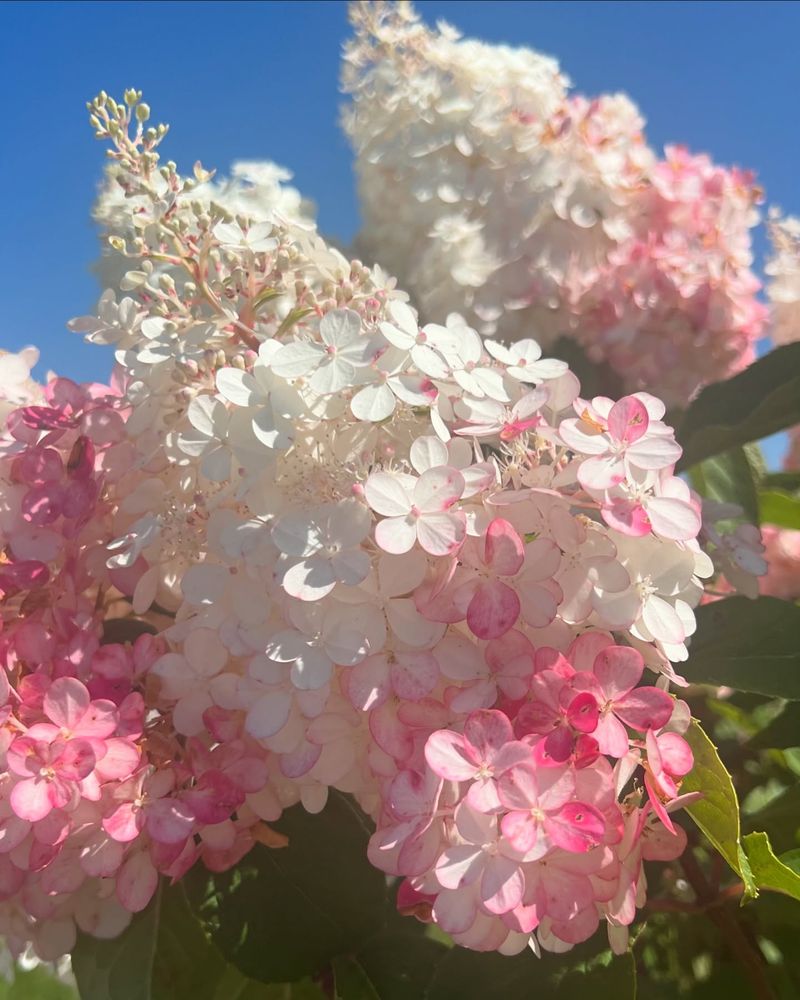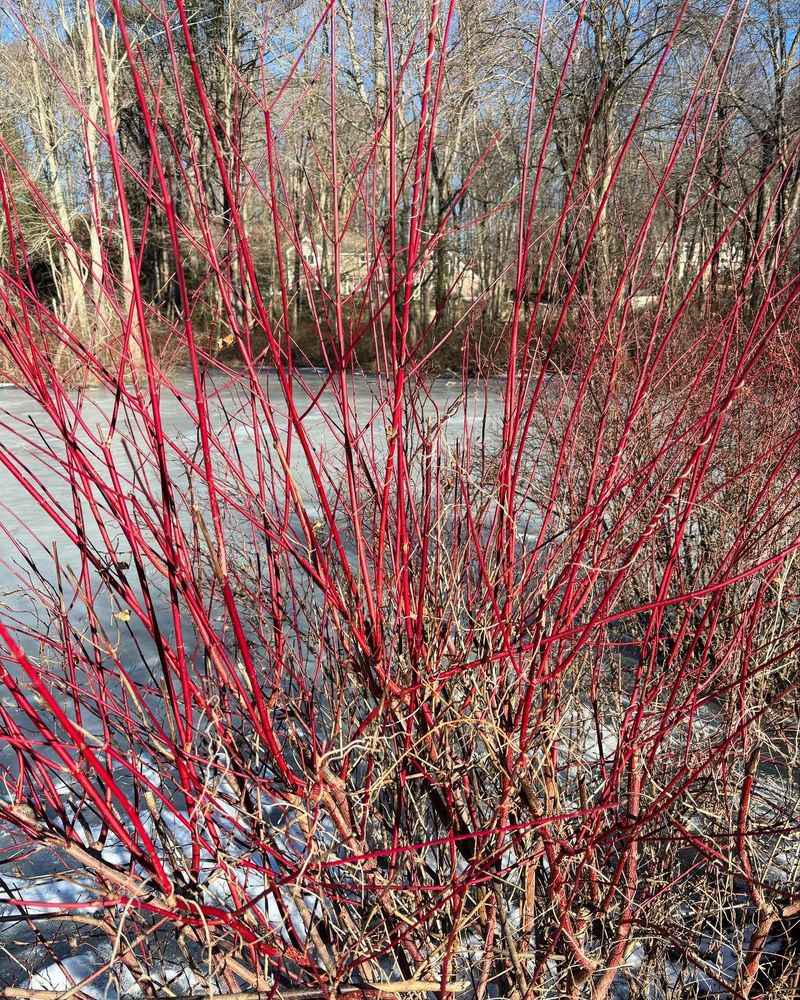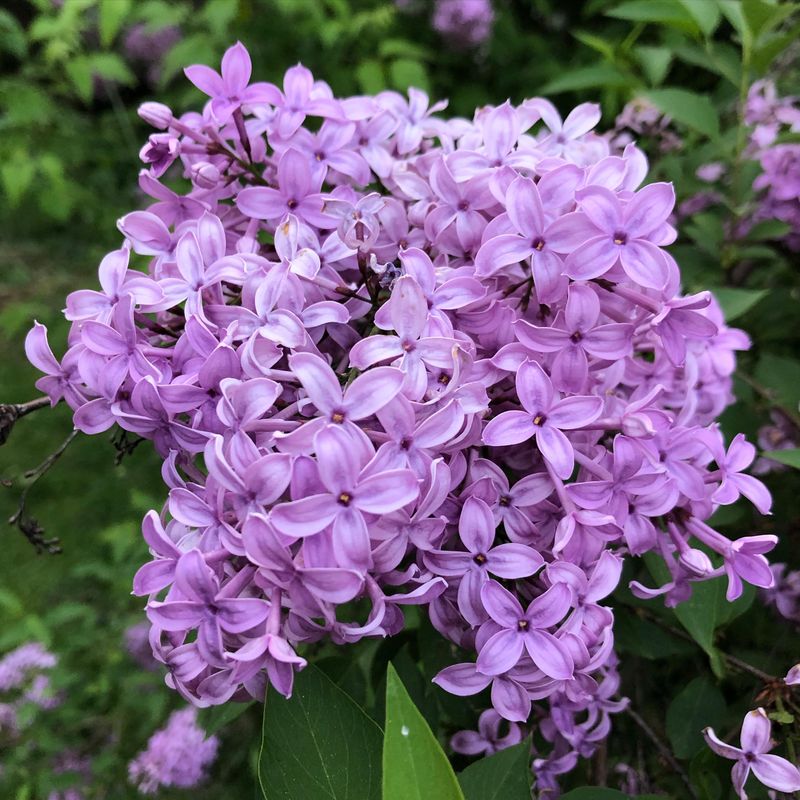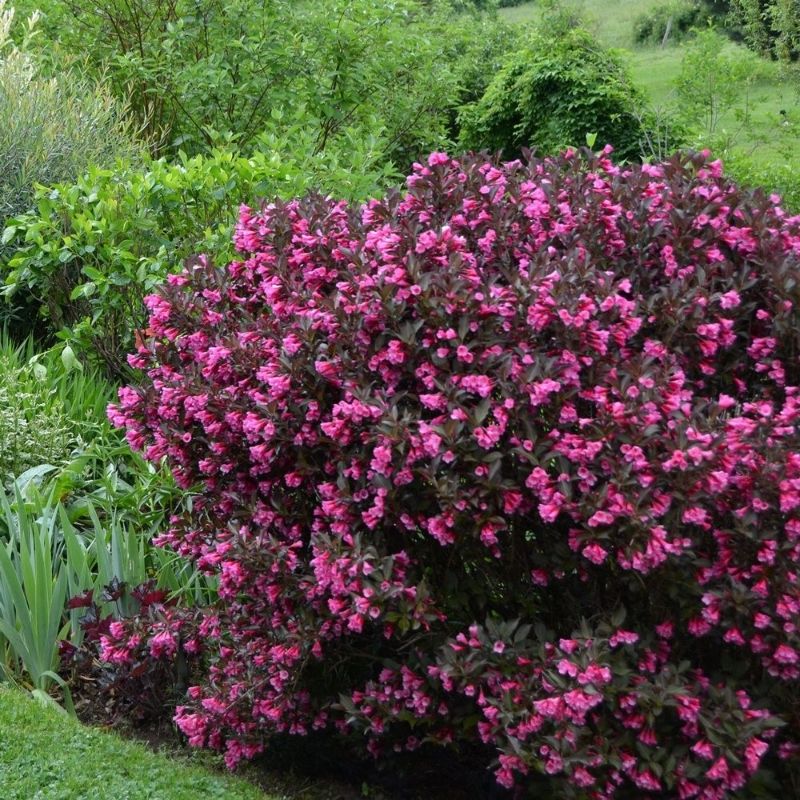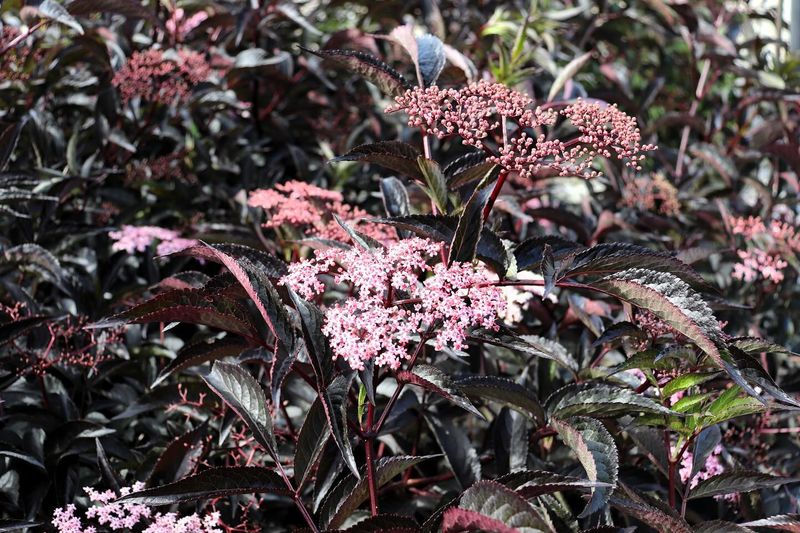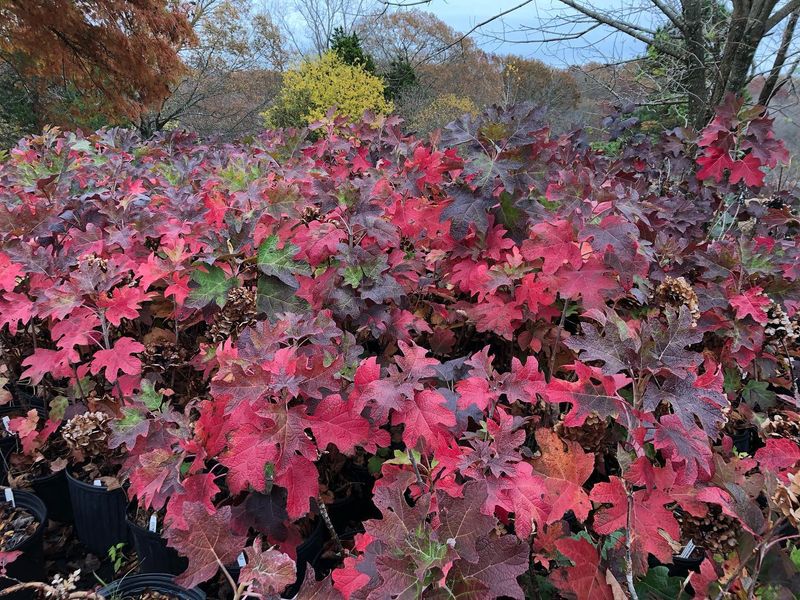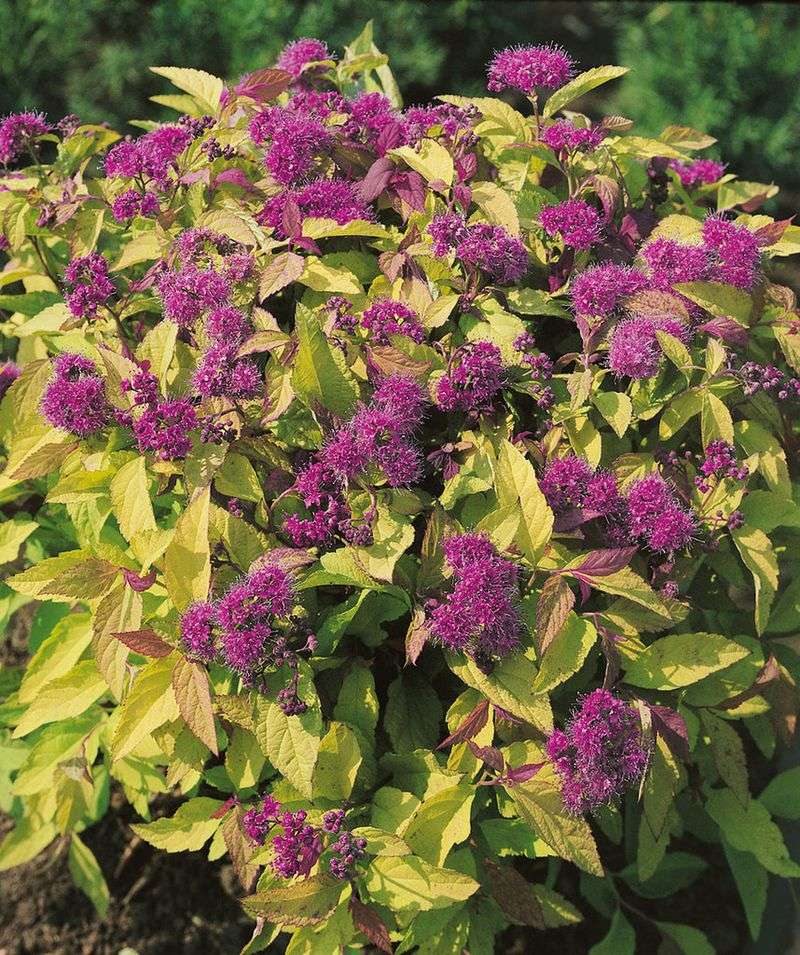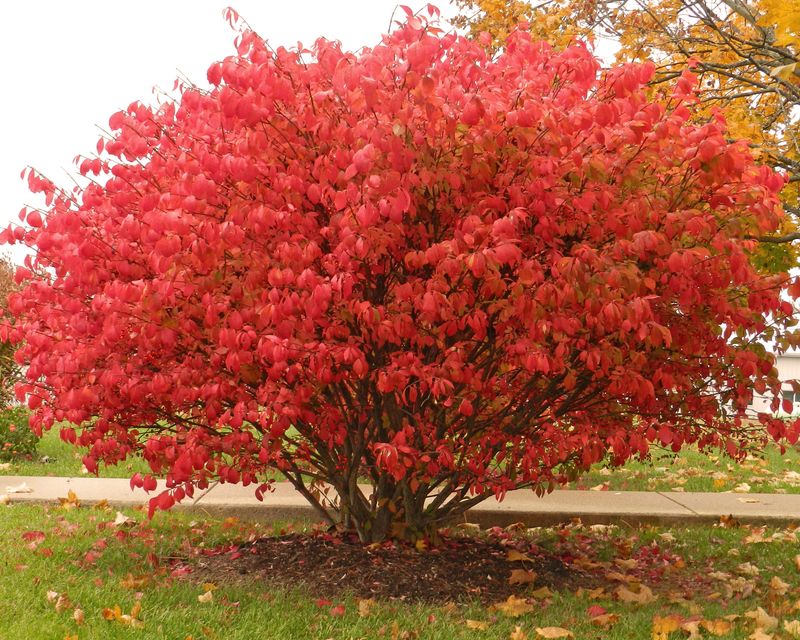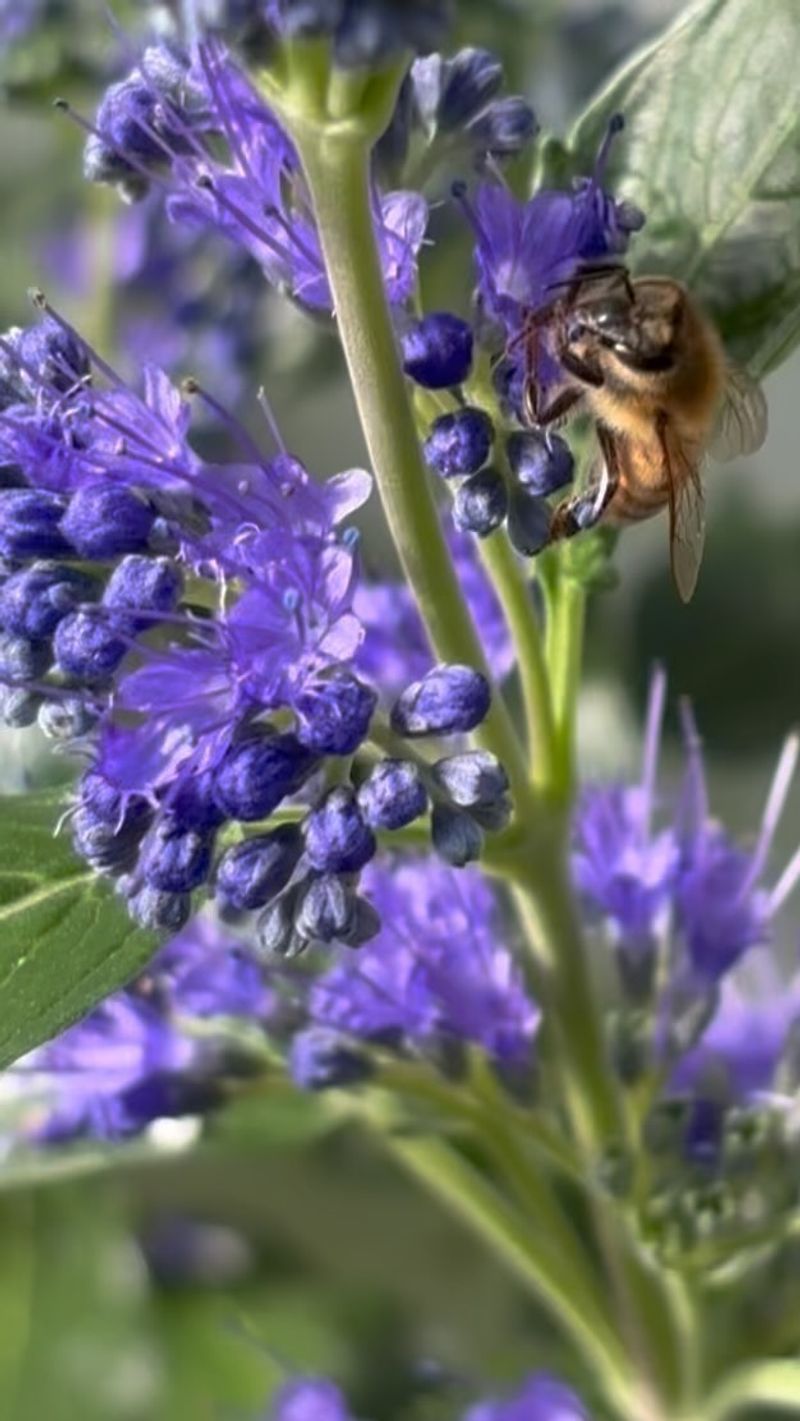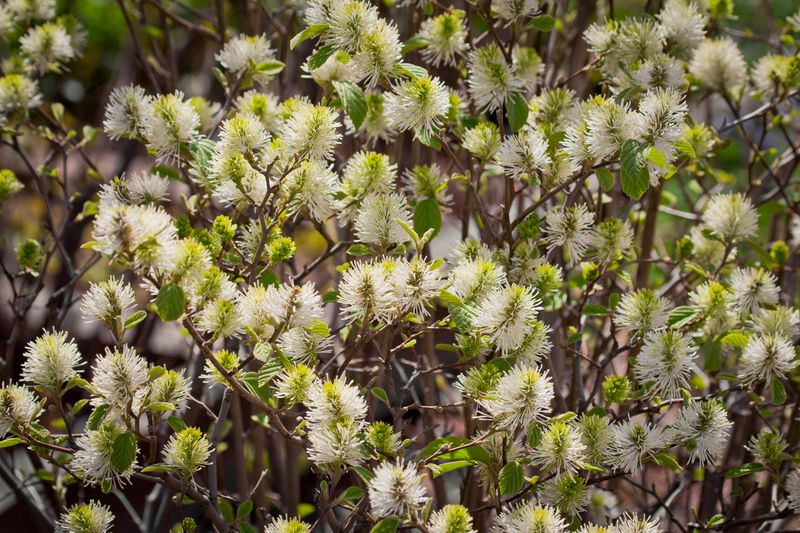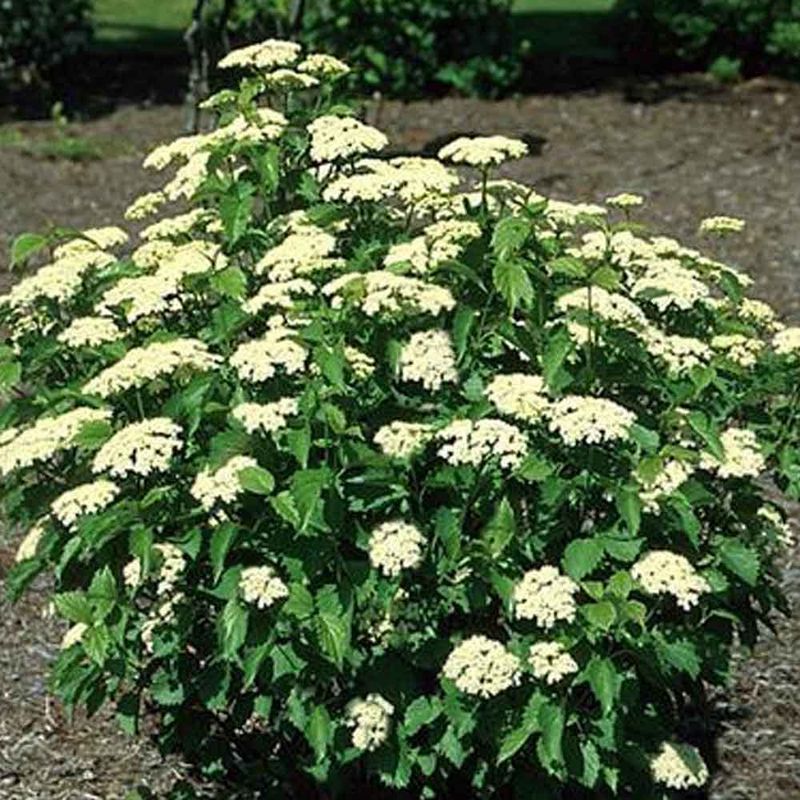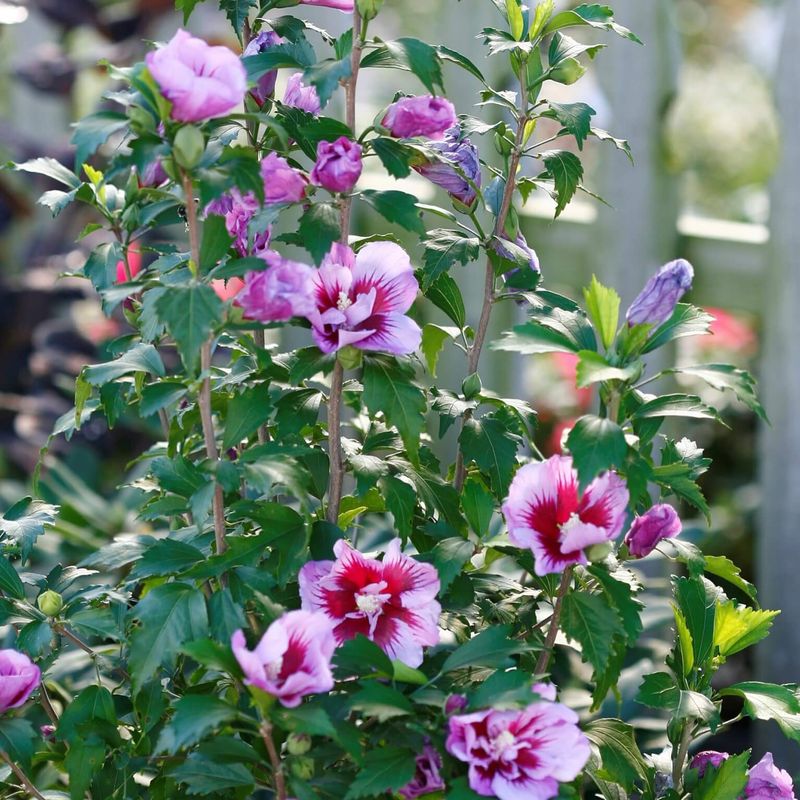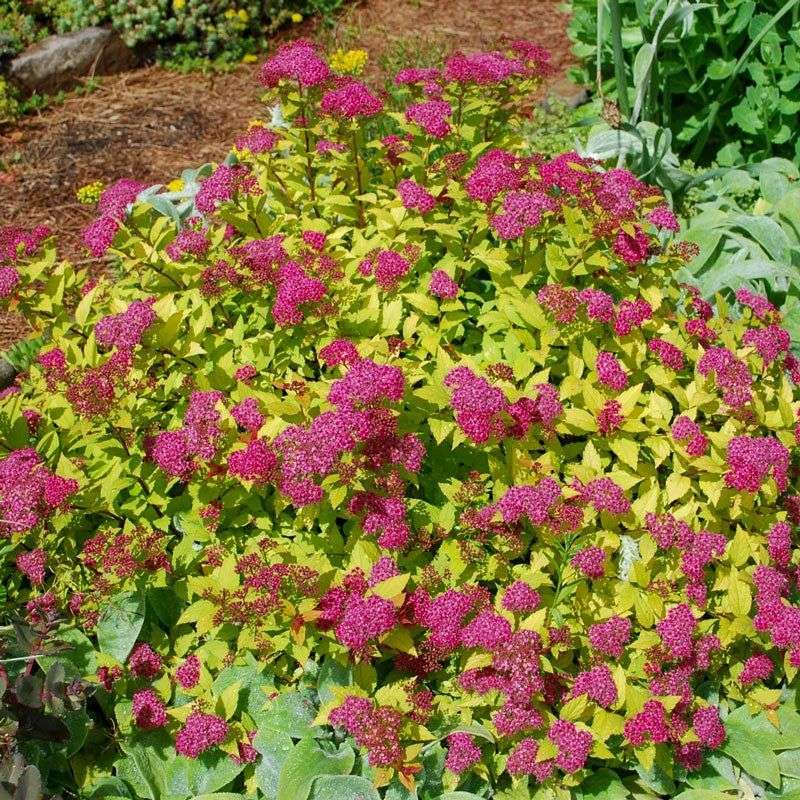Planting new shrubs can test even the most patient gardener’s resolve. Many shrubs start out looking sparse, awkward, or just plain disappointing in their first year. But nature rewards those who wait! The second year often brings dramatic transformations as roots establish, branches fill out, and the plant’s true character emerges.
1. Butterfly Bush (Buddleia)
First-year butterfly bushes often look gangly and produce minimal flowers. With patience comes reward though! After winter’s first pruning, these shrubs return with vigorous growth and a more balanced shape.
The second summer brings an explosion of fragrant blooms that attract butterflies by the dozens. The woody structure becomes more substantial, creating a focal point rather than the awkward teenager of the garden it resembled initially.
2. Hydrangea ‘Annabelle’
Year one Annabelle hydrangeas barely hint at their future glory. Their stems often flop under the weight of even modest blooms, and the overall appearance lacks drama.
Come year two, the root system strengthens dramatically, supporting sturdier stems and significantly larger flower heads. Those dinner-plate-sized white blooms that made you choose this variety finally appear! The plant develops a rounded, full silhouette that stands proud in the landscape.
3. Beautyberry (Callicarpa)
Rookie beautyberry shrubs rarely live up to their name. Sparse branching and minimal fruit production leave many gardeners wondering if they’ve made a mistake.
Patience pays off spectacularly in year two! The branching structure fills out completely, creating a graceful arching form. Fall brings clusters of vibrant purple berries that transform this ordinary-looking shrub into a showstopper. Birds flock to the abundant berries, adding life to your autumn garden.
4. Smokebush (Cotinus)
First-year smokebushes show little of their potential, with minimal branching and unremarkable foliage. Many gardeners become concerned when their prized purple varieties look more green than expected.
Year two brings remarkable transformation as the plant’s true colors emerge. The signature smoky plumes finally appear, creating a hazy, ethereal effect above the foliage. Purple varieties develop deeper coloration, and the overall form becomes more substantial and sculptural.
5. PeeGee Hydrangea (Hydrangea paniculata)
First-year PeeGee hydrangeas often produce just a handful of small, unimpressive flower panicles. The plant’s framework appears sparse, leaving large gaps in the landscape design.
Year two brings a dramatic transformation! The shrub doubles in size, developing a strong branching structure. Abundant cone-shaped blooms emerge in mid-summer, starting white and gradually shifting to pink and russet tones by fall. The weight of numerous blooms creates a graceful, arching habit.
6. Red-Twig Dogwood (Cornus sericea)
Newly planted red-twig dogwoods rarely impress with their winter display. First-year stems produce minimal vibrant color, and the overall plant looks thin and underwhelming.
After establishing for a full growing season, the transformation is striking! Second-year plants develop numerous stems that turn brilliant red in winter. The shrub fills out completely, creating a dense thicket of colorful branches that stand out dramatically against snow or evergreens.
7. Lilac (Syringa vulgaris)
First-year lilacs typically produce few if any of their famous fragrant blooms. The branching structure appears sparse and awkward, giving little hint of the magnificent flowering shrub to come.
By the second spring, the transformation begins in earnest. The plant develops a fuller form with more substantial branching. Those intoxicatingly fragrant flower clusters finally appear in meaningful numbers! While still not at full maturity, year two provides a delightful preview of the lilac’s future glory.
8. Weigela ‘Wine & Roses’
Freshly planted ‘Wine & Roses’ weigela often disappoints with pale foliage and minimal flowering. The plant’s structure looks incomplete, with awkward gaps between branches.
Year two reveals why this variety earns its place in gardens! The purple-tinged foliage darkens to a rich wine color that holds throughout summer. Branches fill out completely, creating a rounded form covered in bright pink trumpet-shaped flowers that attract hummingbirds by the dozen.
9. Ninebark (Physocarpus)
Newly planted ninebark varieties like ‘Diabolo’ or ‘Coppertina’ often look straggly and unimpressive. Their signature colorful foliage may appear washed out or green-tinged rather than the rich purple or copper advertised.
Second-year growth brings dramatic improvement! The shrub fills out completely with a strong, arching form. Foliage color intensifies dramatically, especially in purple varieties. The exfoliating bark—the feature that gives ninebark its name—becomes more noticeable, adding winter interest.
10. Elderberry (Sambucus)
First-year elderberries, particularly colorful varieties like Black Lace, often look sparse and underwhelming. The distinctive cut-leaf foliage appears, but lacks the density that makes these shrubs special.
Year two brings remarkable transformation! The plant develops multiple stems and fills out completely. Purple varieties deepen in color, creating dramatic contrast in the landscape. Flat clusters of fragrant flowers appear in abundance, followed by nutritious berries that attract birds and can be harvested for homemade syrups.
11. Oakleaf Hydrangea (Hydrangea quercifolia)
Year one oakleaf hydrangeas give little indication of their future magnificence. The distinctive lobed leaves appear, but the plant’s structure remains sparse with minimal flowering.
Second-year growth reveals this native shrub’s true character! The plant develops a strong architectural presence with substantial branching. Large cone-shaped flower clusters emerge in abundance, starting white and aging to pink and burgundy. Fall brings spectacular burgundy-red foliage color that rivals any maple.
12. Spirea ‘Goldflame’
Newly planted ‘Goldflame’ spirea often looks rather ordinary, with muted foliage color and minimal flowering. The plant’s form appears loose and undefined, lacking the compact mounding habit promised on the nursery tag.
Year two brings the fireworks! New growth emerges in brilliant orange-red before maturing to gold. The shrub develops a perfect rounded shape without pruning. Pink flower clusters cover the plant in summer, creating beautiful contrast against the golden foliage.
13. Burning Bush (Euonymus alatus)
First-year burning bushes show almost none of their famous fall color. The plant’s structure appears thin and insignificant, with widely spaced branches that create an awkward appearance.
Patience rewards the gardener in year two! The shrub develops a fuller, more balanced form with distinctive corky ridges appearing on stems. Fall brings the spectacular crimson foliage that made this plant famous. The transformation from ordinary green shrub to fiery autumn focal point is truly remarkable.
14. Bluebeard (Caryopteris)
Newly planted bluebeard shrubs often appear sparse and produce minimal flowers. Their silvery-green foliage is present but lacks the density needed to make an impact in the landscape.
Year two shows why this late-summer bloomer deserves garden space! The plant develops a perfect mounded form with significantly more branches. August brings a stunning display of vivid blue flowers that cover the entire shrub, attracting bees and butterflies in droves.
15. Fothergilla (Witch Alder)
First-year fothergilla plants give little hint of their multi-season appeal. They typically produce few if any of their bottlebrush-like spring flowers and show minimal fall color.
Year two reveals this native shrub’s true character! Spring brings numerous fragrant white flower clusters before the leaves emerge. The summer foliage develops greater density and a bluish-green cast. Fall delivers spectacular multi-colored foliage in shades of yellow, orange, and red all on the same plant.
16. Viburnum ‘Blue Muffin’
Newly planted ‘Blue Muffin’ viburnums offer little excitement. The plant’s branching structure appears thin and produces minimal flowering or fruiting in its first season.
Second-year growth brings dramatic improvement! The shrub develops a dense, rounded form with substantial branching. White flower clusters cover the plant in spring, followed by striking blue berries that persist for weeks. The berries create perfect contrast against the glossy green foliage, making this plant a true garden standout.
17. Rose of Sharon (Hibiscus syriacus)
First-year Rose of Sharon often disappoints with minimal branching and sparse flowering. The plant’s form appears stick-like and awkward in the landscape.
Year two brings remarkable transformation! The shrub develops multiple stems and fills out into a vase-shaped form. Tropical-looking flowers appear in abundance from mid-summer through fall when many other shrubs have finished blooming. The long flowering period and easy care make this second-year performer a garden standout.
18. Potentilla (Cinquefoil)
Newly planted potentilla shrubs often look thin and produce few of their cheerful button-like flowers. The overall appearance lacks the density and color impact promised at the garden center.
By the second growing season, potentilla comes into its own! The plant develops a perfect rounded form that rarely requires pruning. Bright yellow, white, or pink flowers appear in tremendous numbers from late spring through fall. The fine-textured foliage fills out completely, eliminating any gaps in the structure.
19. Japanese Spirea (Spirea japonica)
First-year Japanese spirea varieties like ‘Magic Carpet’ or ‘Goldmound’ produce colorful foliage but lack density and flowering impact. Their form appears loose and undefined rather than the tight mounds pictured on plant tags.
Year two delivers the promised performance! The shrub fills out completely into a perfect low mound. New foliage emerges in brilliant orange-red before maturing to gold or chartreuse. Clusters of pink or white flowers appear in abundance, creating beautiful contrast against the colorful leaves.

